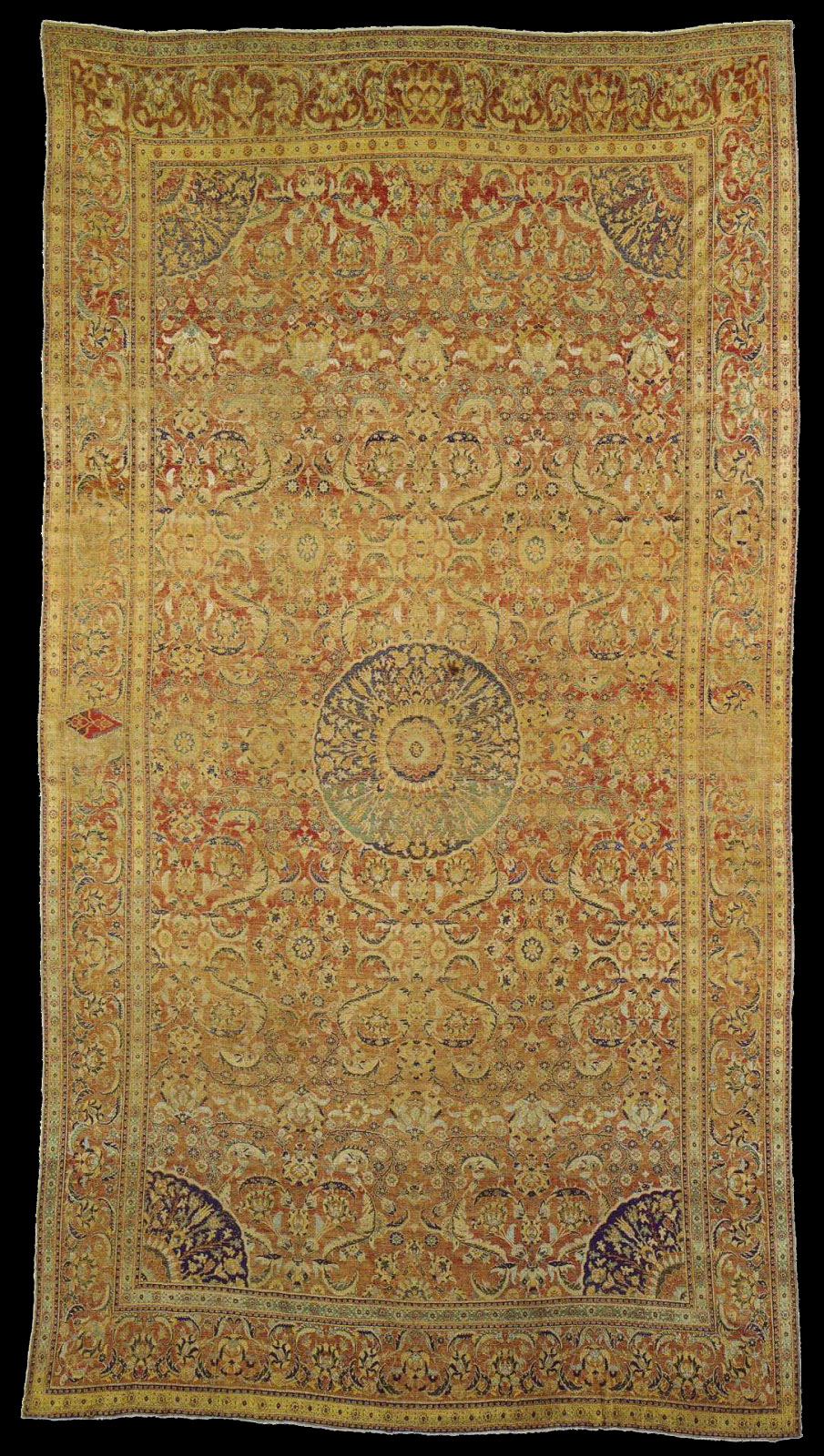TURKISH CARPET. COURT MANUFACTORY; 16th CENTURY
Length, 750 cm.; width,
430 cm.
Warp: wool, brownish, four-fold, left-twist. To 1 dm. 56
warp threads (= 14 to the inch).
Weft: wool, brownish. After every row
of knots three shoots: two straight, the middle shoot wavy. Every shoot
four-fold.
Knotting: sheep's-wool, two-fold. To 1 dm. 22 knots in
the length, 28 knots in the width (= 5 and 7 to the inch). Knotted on two
warp threads. Scheme III. To 1 square dm. about 600 knots (= 35 to the
square inch). Pile strongly to the left and lying flat.
Colours:
Ground-colours: red (inner field and middle stripe of the border), green
(edgings of the border), blue (panels). Colours of the pattern: green,
dark blue, light blue, yellow, white, red. The colours are much changed by
time.
State of preservation: very much worn. In one place in the
border a fragment not belonging has been inserted.
In the inner
field is a close repeating pattern of all-over type. Exactly in the middle
of the carpet a circular medallion of scalloped outline is placed over the
pattern. As central motive of the medallion a large blossom. This is
surrounded by a narrow zone with radiating pointed leaves. Then follows a
wider zone with radiating flowers in groups of three — tulips between rose
buds and carnations between open roses. Between each of these groups a
hyacinth stem. In the corners quadrants of the central medallion. The
ground pattern of the inner field consists of floral motives in ordered
and balanced arrangement, resembling those of the Turkish carpet
reproduced on
Plate 57. The separate floral motives are of more luxuriant type,
especially the palmette blossoms. The straight stems in the length of the
carpet, which are clearly marked in the pattern of that on Plate 57, are
here only partly traceable. In the middle line across the width of the
carpet a portion of the repeating pattern is omitted, and in its place is
inserted a rosette girdled by palmettes, and a new lozenge-figure formed
by palmettes.
The border contains in the broad middle stripe a stem
pattern of palmettes and lancet-leaves, disposed on the plan of an
intermittent wavy stem. The two edgings show the same rosette-pattern as
those of the carpet on Plate 57; their narrow border-strips contain
counterchange cresting in blue and red.
Orientalische Teppiche,
Vienna, 1892, Plate XL.
Text: Old Oriental Carpets, issued by the
Austrian Museum for Art and Industy
with text by Friedrich Sarre and
Hermann Trenkwald |

